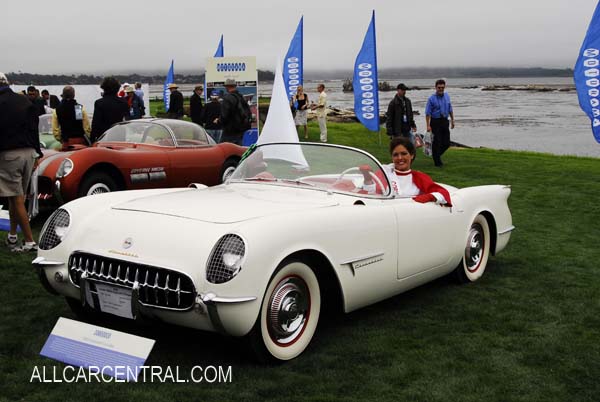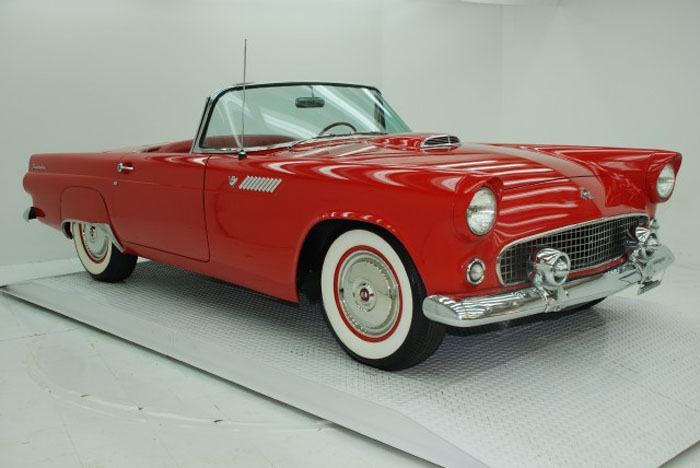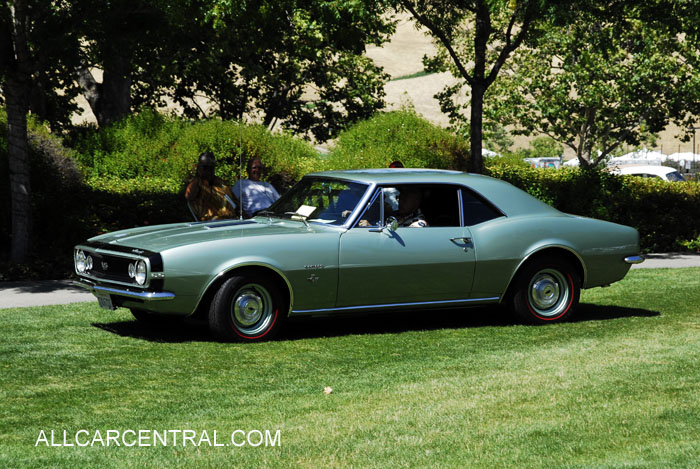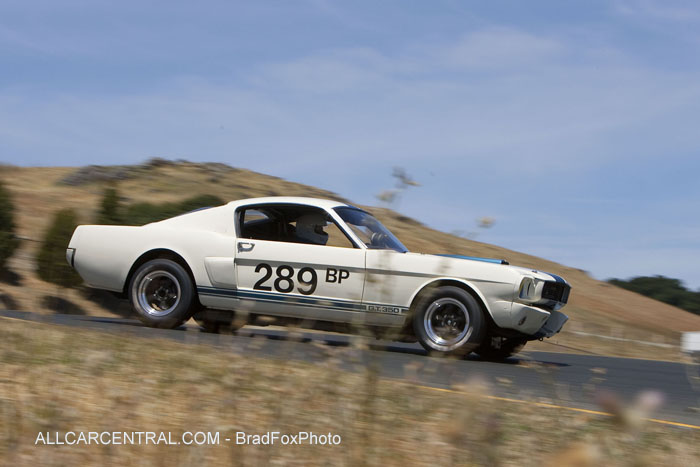Corvette Prototype 1953

As I am sure you will have assumed I am rather keen on vehicle history, visiting car museums, going to Auto Events etc...I am also fortunate that I have a wife who has no real interest in such things therefore has no objection when I may take off for a few days to attend or take part in some car/vehicle gathering be it in the US..Canada or elsewhere. Any truly normal person would say after some fifty years of such activity..."Its time you called it a day and started to take care of the garden, mend the broken steps or put that long overdue coat of paint on the outside" The truth is that I simply don't have the time to waste on such hobbies, further more my skills in such things are limited, make that very limited. OK as my wife will point out I can put an engine together or sort out a damaged gearbox, so what's wrong with holding a paint brush or fixing the hall light that until a few days ago I never knew we had! Answer is simple my luck with Lucas electrics is a strong indication that hall lights are not one of my many callings. On top of this as I often mention we have eight cars in the garage that demand my serious attention, three modern the rest classic, however she has questioned the use of that word from time to time so I decided to select a few post war American classic examples to resolve the situation.
Reality demands that I start with the Corvette, launched in 1953 with enthusiasm and a production run of less than 4000 as expected sales did not materialize. Into 1954 and production dropped to 2,863. Into 1955 a staggering 700 found their way to the Dealers showroom where many of them stayed into the next year. What was wrong? The car looked attractive and the price at around $3,500 was in turn with the other sports cars on the market. Looking closely at the vehicle the first thing that you would notice is the Chevrolet Powerglide Auto Transmission, not quite the device you would expect to find in a sports car. Why was it there? Simple it was a Chevrolet product and readily available. Strange to say the Market Research people at the main office did not seem to understand that in 1953 you did not put automatic drive in what you were selling in competition with the British and European sports cars that all featured a traditional gear shift..It was part of the necessary furniture for any sports vehicle. Chevrolet still had a few serious bucks invested in the car so it was decided to seek the help of some design professional outside of the company to see if anything could be done to make the car more appealing. The fiberglass body was restyled, a manual gear change was offered as an optional, and the power unit was increased with a 280hp V8. There are confusing figures on the final performance after this, as is usually the case with the company promotional people but the Sportscar Illustrated publication reported that at a price of $3,600 and fuel injection, the car was the fastest accelerating production car they had ever tested. It is also feasible to think that the introduction of the Ford Mustang in the same time period had something to do with the continuation of the car even when sales were at their lowest. To my mind it's a true classic simply because it was the first genuine production American sports car, the fact that it was eventfully a success also helps.
Ford Thunderbird 1955
Image by Rick Feibusch

The Ford Thunderbird was a company product. By this I mean that t was designed because Ford designed this car to sell, it was not an inspired product as you could say the Corvette was, but a product resulting from, good market research showing that there was a ready market for such a vehicle. Production figures tend to confirm this. Looking at the period 1955 to 1957 Ford T Bird 16, 000, Corvette 1700. Next year 15,000 to 3400, then in 1957 21,000 to 6,300. This pattern of sales continued year after year. In short Ford did produce a car that had a high appeal to a broad range of customers but that has always been the case with Ford across the market. You might suggest that price had something to do with this however there was not that much between the two vehicles at the end of the day. The T Bird was a success from the moment it hit the streets.
Chevrolet Camaro SS 1967

I have never been an admirer of John Delorean who managed to take the British government of Mrs. Thatcher for a considerable amount of millions but...I must give credit where it's due, he was one of the brightest stars in the post war American Auto Industry. As General Manager of G.M Pontiac Division he brought a wind of fresh thinking into the industry. The "Carmaro/Firebird" of one of the G.M. success stories, introduced in 1967/68 was totally due to DeLorean's direction and management. Its only problem was that it was not attracted to the young driver. However, De Lorean recognized this and in a matter of a few months launched the "Firebird Trans AM", featuring a 400 Cubic Inch V8 Power Unit, rated at 345 HP. If you were under thirty and wanted a real car, said the advertisement... "This was your wish come true". A quick look at the front of the Firebird reminds me of an early post war Ferrari, and I can't help but wonder if this was the thinking behind the style and design! The Trans AM production ran from 1970 to 1979 which speaks for itself as far as success is concerned. Also by some magic spell known only to a few, the car managed to maintain an attractive price throughout this period when most performance cars increased in price every year. I should also mention that there were Two Series of the Trans AM. The second although heavier at around 3,800 pounds was still a fast and well designed vehicle. On a personnel note: I liked, and still do, the design of the Camaro. I may be a touch biased by the fact that I owned one in the 1970's and love the style and design.
Shelby GT350 1966
Image by Brad Fox

I can't talk about De Lorean without including another wonder man of the age, Carroll Shelby. Just mention his name and the image of the Cobra springs to mind. However his influence went much farther than one car. In 1962 Shelby and Ford came together resulting in a truly unique vehicle...The Shelby GT 350 Mustang. Until Shelby got his hands on a Mustang the car was little more than an average Ford product associated with the not so successful Ford Falcon. By no stretch of whatever could this car be called a sports vehicle until Shelby took a standard Mustang Fastback, removed the two rear seats, put in a spare tire to fill the space and changed the image of a Sedan to a two seat Sports Car. He also added a Ford 270 hp V8 engine and a four barrel carburetor. Now add a rebuilt 108 inch wheel base. Outside were fancy wide rim wheels featuring 15 inch tires and a fiberglass hood. Inside a wood rimmed steering wheel, (A very popular item at that time in fact hardly any would be sports, or even semi sports car had to have a wood rimmed steering wheel , not polished, and with steel rivets holding everything in place!) The retail trinket outlets did a roaring trade selling such things to make the standard Mustang look something like the Shelby Mustang. Today the Shelby is a rare find and will fetch a high price at any auction.
Sunbeam Tiger 1966


My next choice may make you wonder why I chose a British Car in a chapter devoted to American classics. My justification is simple; it came out of Caroll Shelby's stable and was only sold in the USA. Based on the Sunbeam Alpine, the Sunbeam Tiger, powered by a Ford V8 became one of the fastest sports cars on the US Highway's, 120 MPH was virtually guaranteed and at a cost of $3,600 you could say that it was almost as attractive as the Cobra at half the price. Sad to say the production run was short, 1963 to 1968 .Its poor relative the Alpine lasted another year but by 1970 the story ends.
As a matter of record the fastest Tiger Coupe was officially timed at 158 mph just twenty miles less than the Cobra. Both cars being driven at the LeMans performance track in late 64. There was a Tiger Mark Two, introduced in 1967 with a 200 hp 289 V8 that pushed the performance up by about ten percent. The purchase by Chrysler of the US/UK operation eventually ended the Sunbeam /Routes Company and a few years later Chrysler UK.
As you will see I have only scratched the surface of the Post War classics especially if we look at Europe. Next time we will look at the UK and later Germany and Italy, who produced some of the most remembered cars of the century.

BACK TO TOP